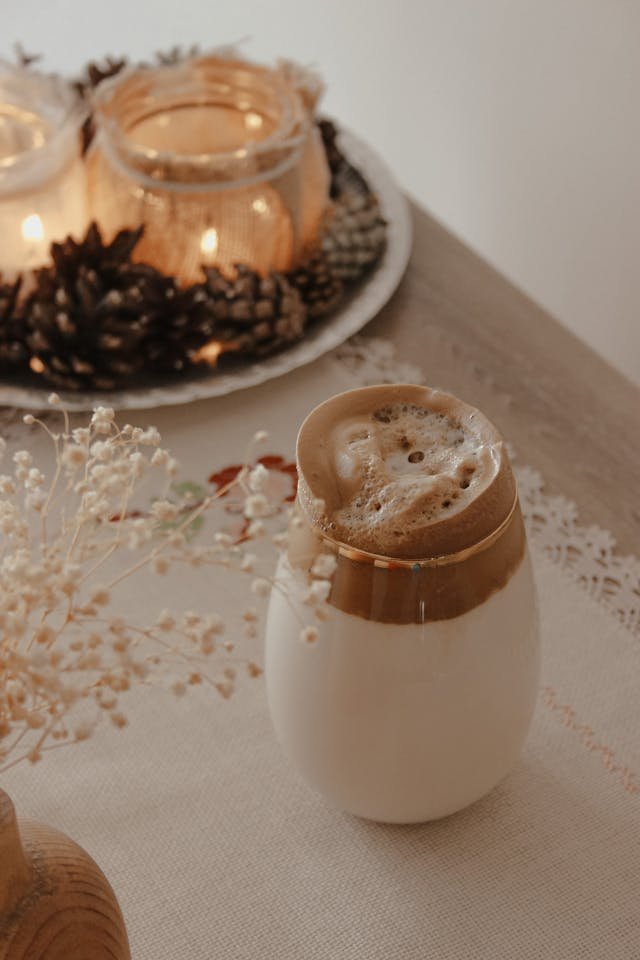February Journal Prompts: Ignite Your Creative Spark
February might be the shortest month, but it offers a wealth of inspiration for journaling. Whether you’re reflecting on your goals or exploring themes of self-love, February is a wonderful time to deepen your writing practice.
Journaling this month provides an opportunity to connect with yourself and your aspirations as the winter months transition into spring.
When you sit down with your journal, consider exploring topics such as relationships, creativity, and personal growth. These areas are particularly meaningful in February, with its focus on love and new beginnings.
Asking yourself thoughtful questions can lead to greater insights and meaningful writing sessions.
By consistently engaging with your journal, you’ll not only gain clarity about your personal goals but also nurture a sense of gratitude and fulfillment.
Embrace this time to explore your thoughts on topics like hope and resilience, setting the stage for a transformative writing journey.
Why Journal in February
February offers a unique opportunity for introspection and planning. By looking back on January and getting ready for March, you can gain valuable insights and set goals effectively.
Reflecting on the Past Month
February provides a perfect moment to review your experiences from January. Take a look at any habits or patterns emerging over the month.
Consider what worked well and areas where change might be needed.
You might want to jot down significant events and how they impacted you. Think about emotions and reactions to various situations. Did you achieve the goals you set at the start of the year, or do they need revisiting?
Reflect on any challenges faced in your personal or professional life. Understand how these moments shaped your current mindset. By evaluating January, you prepare yourself for the upcoming months with a clear perspective.
Preparing for Spring
As winter starts to fade, February is an ideal time to plan for the energy and renewal of spring. Think about new projects or habits you wish to start as the season changes.
Set goals that align with the rejuvenating power of spring. This might include tackling home improvement tasks, garden projects, or personal aspirations.
Begin identifying the tools and resources you need to kick off these goals successfully.
Also, plan for any lifestyle changes you want by the time spring arrives. This could involve reviewing your health and wellness routines or setting intentions for leisure activities as the weather improves.
Preparing now ensures a smooth transition.
Self-Love and Valentine’s Day
Valentine’s Day isn’t just about romance. It’s an excellent occasion to focus on self-love, which strengthens your sense of worth and happiness. Key practices such as expressing gratitude and embracing affirmations can boost your self-esteem and make this day truly special.
Gratitude Practices
Practicing gratitude is a wonderful way to cultivate self-love on Valentine’s Day. Start by reflecting on aspects of yourself and your life that you appreciate.
Try keeping a gratitude journal where you jot down three things you value about yourself each day. This simple act can shift your mindset from negativity to positivity.
Consider expressing gratitude through creative outlets. You might write a letter to yourself listing qualities you admire or create a small collage of images and words that represent your strengths.
These practices help reinforce a healthy view of yourself and promote inner peace. By acknowledging your achievements and traits, you build a foundation of self-respect and joy.
Affirmations and Self-Acceptance
Affirmations are powerful tools for nurturing self-love. Create a list of positive affirmations that resonate with you, such as “I am worthy of love” or “I choose kindness for myself and others.”
Repeat these affirmations daily, especially on Valentine’s Day, to remind yourself of your inherent value.
Embrace self-acceptance by allowing yourself to be authentic. Practice self-compassion when faced with challenges, recognizing that imperfections are part of being human.
Celebrate small victories and forgive yourself for setbacks. Over time, this approach helps you build resilience and a more compassionate relationship with yourself, ensuring that your Valentine’s Day is filled with self-love.
Creative Journal Prompts
Bring a new level of inspiration to your journaling by exploring creative prompts. Focus on exercises that encourage self-expression and stimulate your imagination. Try incorporating both writing and drawing to see where your creativity takes you.
Poetry and Short Stories
Experimenting with poetry and short stories can be a fun way to ignite creativity. Start by choosing a word or theme you find intriguing.
Write a poem using free verse or a structured style like a haiku. Let your thoughts flow without worrying too much about rhyme or meter.
Consider writing a short story based on a memory or a fantastical idea that popped into your head. Limit your story to a page, creating an engaging piece without the pressure of producing a lengthy narrative.
This practice helps you refine your storytelling skills and enhances your ability to express emotions and ideas succinctly.
Doodling and Art
Incorporating doodling and art into your journaling routine offers a refreshing change from words. Begin with simple shapes or patterns that gradually turn into something more intricate as your imagination guides you.
Don’t hesitate to use vibrant colors or mixed media like magazine cutouts and washi tape.
Try creating a visual story or scene that represents your feelings or thoughts. This method can bring clarity to your emotions and is a delightful way to explore different artistic styles.
Remember, it’s about the process, not perfection, so enjoy the act of creating without self-judgment.
Personal Growth and Goals
This section will explore tracking habits and planning your future. By focusing on personal growth, you can make meaningful changes and set clear goals.
Habit Tracking
Creating a habit tracker can be a game-changer for personal development. Start by listing habits you want to develop or improve.
Common habits include reading daily, exercising regularly, or dedicating time for meditation. Using a simple table or chart can help you monitor progress.
Example Table:
| Habit | Mon | Tue | Wed | Thu | Fri | Sat | Sun |
|---|---|---|---|---|---|---|---|
| Exercise | ✔️ | ❌ | ✔️ | ❌ | ✔️ | ✔️ | ❌ |
| Read 30 mins | ✔️ | ✔️ | ✔️ | ❌ | ❌ | ✔️ | ✔️ |
Being consistent with tracking will provide you with insights into your routine. It’s essential to be patient and adapt these habits gradually, celebrating your progress each step of the way. If you’re interested in more techniques, some resources explore habit-building in greater detail.
Future Planning
Planning for the future involves setting realistic and measurable goals. Think about where you want to be in a year or even five years.
Break down your aspirations into smaller, actionable steps. You could focus on personal achievements, career milestones, or learning new skills.
Use smart goals to ensure they are specific, measurable, achievable, relevant, and time-bound.
Keeping a calendar or planner helps keep track of deadlines and important milestones. Writing regularly about your progress can keep you motivated and reflective on your journey. For additional inspiration, exploring diverse planning methods can also be beneficial.
Health and Wellness
Incorporating health and wellness journal prompts into your routine can enhance your physical and mental well-being. You’ll explore mindful exercises and dive into reflections on your physical fitness journey.
Mindfulness Exercises
Mindfulness journaling allows you to nurture a present-focused mindset. Start by writing about what you’re grateful for today or jot down a list of simple pleasures, then explore how these make you feel.
Describe the sensations you notice during a meditation session. Conclude by imagining a peaceful place.
You should also track days when your mind felt the lightest. This practice pulls attention to your healthier mental states and fosters awareness.
By recording such observations, you can build resilience and discover patterns that promote tranquility and relaxation.
Physical Fitness Reflections
Recording your fitness journey can help you recognize progress and areas for growth. After workouts, write about what exercises you completed and how your body felt.
Reflect on any challenges during the session, such as fatigue or motivation, and how you overcame them.
Consider tracking your fitness milestones. Celebrate these moments to maintain enthusiasm.
Reflecting on nutritional habits and how certain foods affect your performance can provide insights into your overall health.






